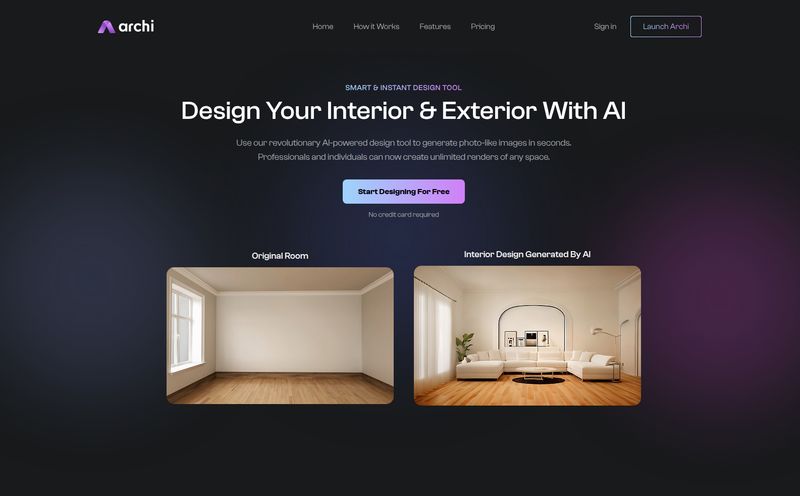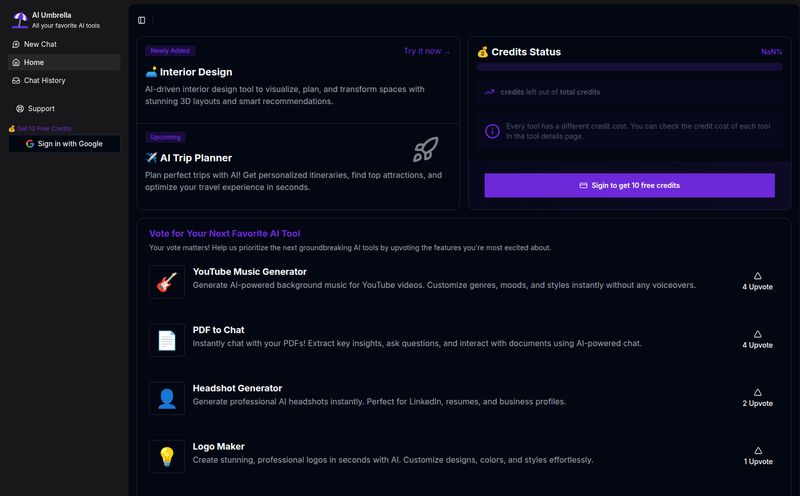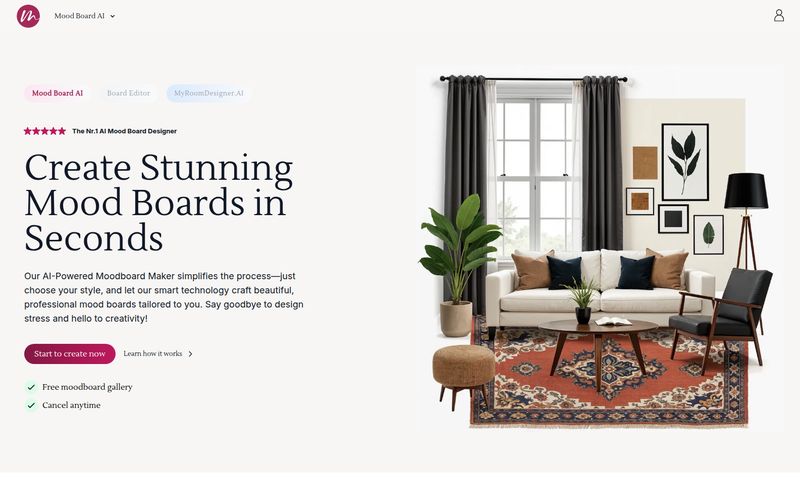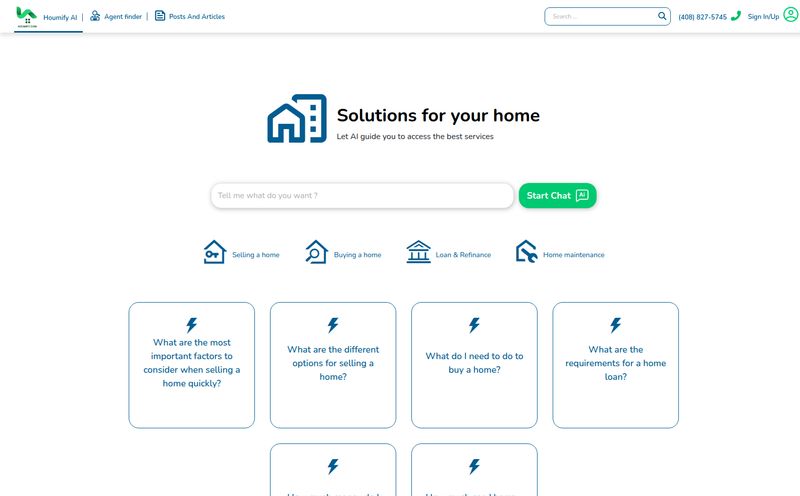We’ve all been there. You get the photos back for a new listing, and the property is… well, it’s a great space with good bones. But it’s empty. And empty rooms on Zillow or Rightmove just don't hit the same. They feel cold, sterile, and buyers struggle to imagine their lives in that echoey space. For years, the answer was home staging. A logistical headache of renting furniture, hiring movers, and shelling out thousands of dollars before you've even made a dime.
Then virtual staging came along, which was better, but often slow and still required a designer who charged by the image. It was an improvement, but not a revolution.
But recently, I've been hearing the buzz about AI-powered tools that promise to do it all in seconds. Being the slightly skeptical but terminally curious SEO guy I am, I had to see for myself. I stumbled across a platform called VirtualHomeStaging.co, and their claim was bold: professional virtual staging in 30 seconds. Thirty. Seconds. My coffee takes longer to brew. So, I took a look.
So, What Exactly Is This AI Staging Magic?
Before we go further, let's get on the same page. Traditional home staging is physically placing furniture in a home. AI virtual staging is the digital equivalent, but on steroids. You upload a photo of an empty (or even a cluttered!) room, and an artificial intelligence engine analyzes the space—the lighting, dimensions, and perspective—and then furnishes it digitally based on a style you choose. No movers, no rental contracts, no worrying about scratching the hardwood floors.
It’s like having an interior designer on speed dial, but one that works at the speed of light and doesn’t charge you an arm and a leg for a consultation. The goal is to create an emotional connection. To turn a picture of a 'house' into a vision of a 'home'.
Diving Into VirtualHomeStaging.co: The Nitty-Gritty
The first thing that struck me about their site was the simplicity. No fluff, just a clear promise. The whole process is broken down into three steps: Upload, Select Style, Download. That’s it. It’s a workflow designed for busy real estate agents who don’t have time for a steep learning curve.
Speed That Honestly Feels a Bit Like Witchcraft
The “30-second” thing isn’t just marketing fluff. It’s their core feature. In the time it takes you to write a caption for your Instagram post, you can have a fully staged photo ready to go. This is a massive shift from the old way of waiting days to get images back from a designer. In a hot market where every hour counts, this speed is a serious competitive advantage.
One-Click Simplicity and Endless Do-Overs
The interface is incredibly straightforward. You can add furniture to an empty room or even ask the AI to renovate a room with existing, dated furniture. I love this. Got a seller with an avocado-colored sofa from the 70s? The AI can just imagine a new reality. Poof. Gone.
But here's my favorite part: multiple regenerations. We've all had that client. The one who can't quite decide between Modern Farmhouse and Scandinavian Minimalist. In the past, every revision would mean another fee and more waiting. Here, you just click again. And again. You can generate different takes on the same room until you land on the one that just clicks. No extra cost. That alone is huge.
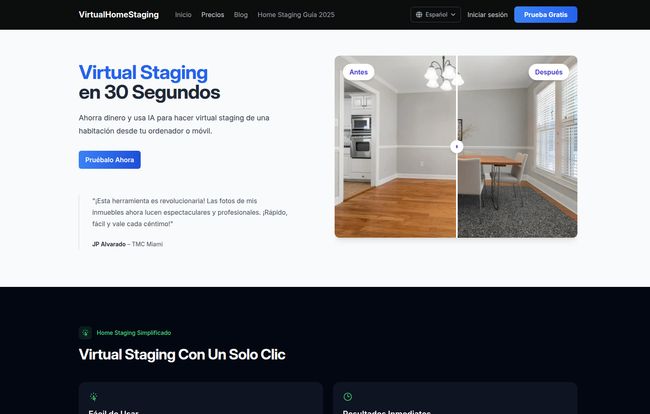
Visit Virtual Home Staging
But Does it Look Real? The All-Important Visuals
Okay, it's fast and easy. But does it look good? The output from these AI tools can sometimes wander into the uncanny valley. Based on the examples, the results from VirtualHomeStaging.co are pretty darn impressive. The AI seems to have a good grasp on light, shadows, and scale, which is where a lot of older software failed. The furniture and decor choices look current and, most importantly, plausible.
According to their own site, using their staging can lead to some eye-popping results: they claim properties sell 73% faster and for up to 25% higher offers. While your mileage may vary, the core principle is sound. A beautifully presented home simply performs better. It gets more clicks, more saves, and more showing requests. It's not about fooling anyone; it's about helping buyers see the potential that you already see.
Let's Talk Money: The Pricing Breakdown
This is where things get really interesting. Traditional staging can set you back anywhere from $500 to $5,000+, depending on the home's size. A single image from a human virtual stager can be $30-$100. So how does this AI tool stack up? The pricing is in Euros, but the value is clear.
| Plan | Price | Images | Best For |
|---|---|---|---|
| Free Trial | €0 | 5 | Just trying it out. No risk. |
| Standard | €29 | 15 | A single small property or condo. |
| Professional | €39 | 30 | The average family home. This feels like the sweet spot. |
| Premium | €59 | 50 | Power agents or small agencies with multiple listings. |
For my money, the Professional plan at €39 for 30 images is an absolute steal. That's a little over €1 per image. You can’t even get a decent stock photo for that price, let alone a custom-staged room. It’s so cost-effective it feels like a typo.
A Quick Reality Check
Is it perfect? Of course not. The biggest variable will always be the source material. A blurry, dark photo taken on a ten-year-old phone will yield less-than-stellar results. Garbage in, garbage out. You need to feed the AI a high-quality, well-lit image to get the best results. Also, while the AI is smart, it might not perfectly match your very specific, niche design vision every single time. But with the ability to regenerate options, you’re very likely to find something that works brilliantly.
Who Should Be Using This? Like, Right Now?
I see a few groups that could benefit immensely:
- Solo Real Estate Agents: Maximize your listings' appeal without blowing your marketing budget. This is your new secret weapon.
- Real Estate Teams & Agencies: Create a consistent, high-quality look across all your listings and do it at a fraction of your current design cost.
- Property Developers: Showcase the potential of off-plan or newly built, empty properties. Help buyers visualize the finished product.
- For Sale By Owner (FSBO) Sellers: Level the playing field and give your listing the professional polish it needs to compete with agent-listed properties.
Basically, if you are in the business of selling or renting property, a tool like this should be in your toolbox.
My Final Takeaway
Look, the real estate market isn't getting any less competitive. Standing out is everything. For years, technology has been slowly changing how we do business, but AI staging feels different. It's a genuine leap. Tools like VirtualHomeStaging.co are democratizing high-end marketing, making it accessible, affordable, and incredibly fast.
It’s not about replacing good photography or a well-priced home. It's about enhancing them. It’s about making that first impression online so powerful that buyers can't help but book a viewing. And for the price of a few fancy coffees, you can transform your entire portfolio of listings. To me, that's not just a good deal, it's the future of property marketing.
Frequently Asked Questions
What is AI Virtual Staging?
AI Virtual Staging uses artificial intelligence to digitally furnish and decorate photos of empty or outdated rooms. You upload a picture, choose a style (like Modern, Industrial, etc.), and the AI software generates a new, fully-staged image in seconds.
Why use this instead of hiring a human designer?
The main advantages are speed and cost. An AI tool like VirtualHomeStaging.co can deliver results in under a minute for a very low price per image. It also allows for instant revisions (regenerations) at no extra cost, which is a big plus compared to the back-and-forth process with a human designer.
What if I don't like the first design the AI creates?
That's the beauty of it. All the paid plans include multiple regenerations. If the first attempt isn't quite right, you can just click a button to generate a new version with different furniture or arrangements until you find one you love.
What kind of photos should I upload for the best results?
For optimal results, use clear, bright, high-resolution photos. Photos taken during the day with good natural light work best. Try to take the picture from a corner to show as much of the room as possible. Avoid blurry or very dark images.
Is the furniture in the photos real? Can buyers purchase it?
No, the furniture is digitally generated by the AI for illustrative purposes only. Its purpose is to help potential buyers visualize the space and its potential layout, not to act as a furniture catalog.
Can I use this for any type of room?
Yes, the platform is designed to work with all kinds of residential spaces, including living rooms, bedrooms, kitchens, dining areas, home offices, and even outdoor patios. You can select the room type to help the AI make more appropriate choices.
